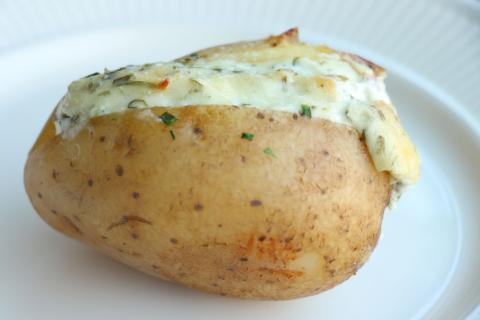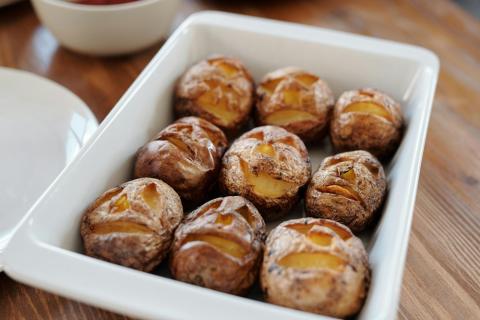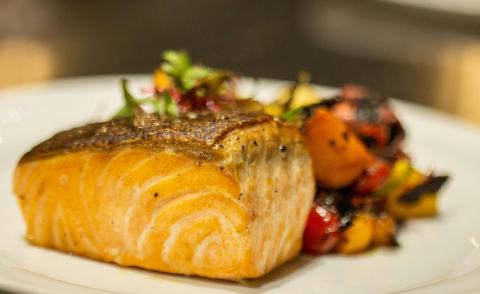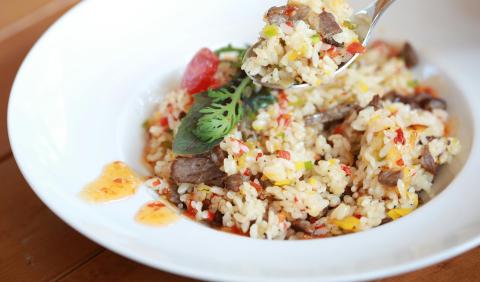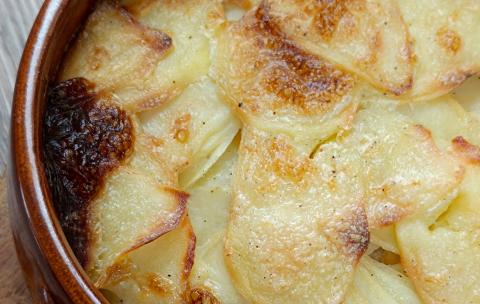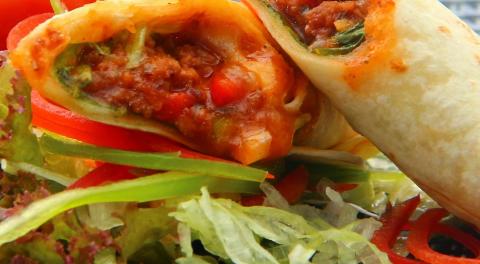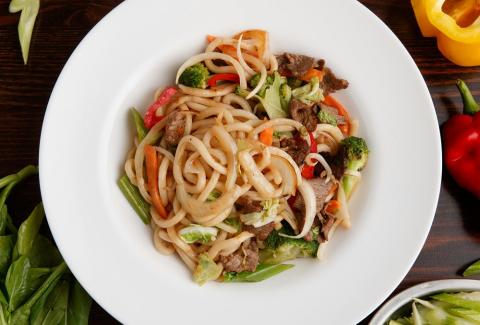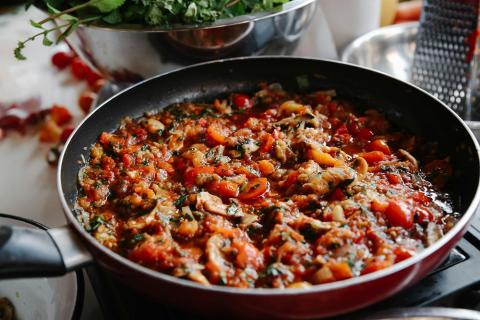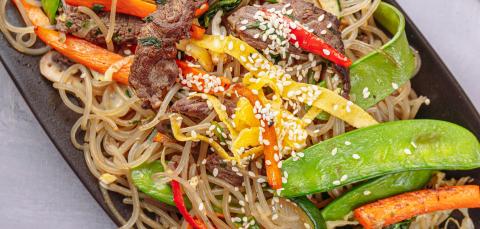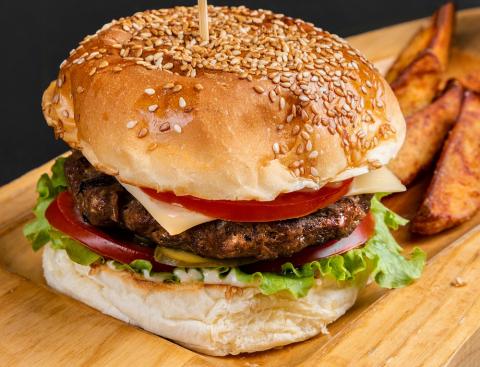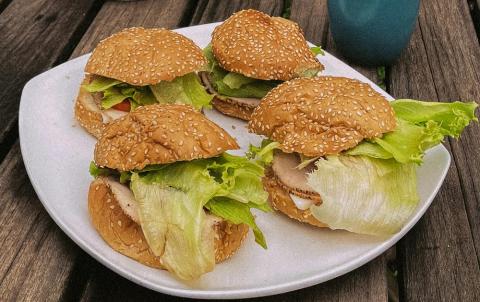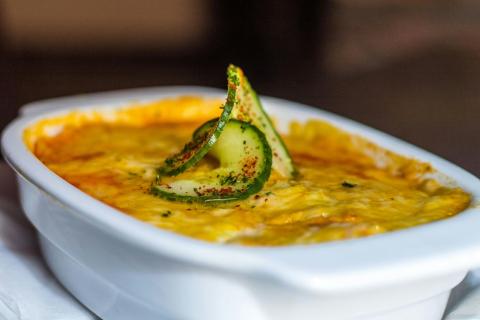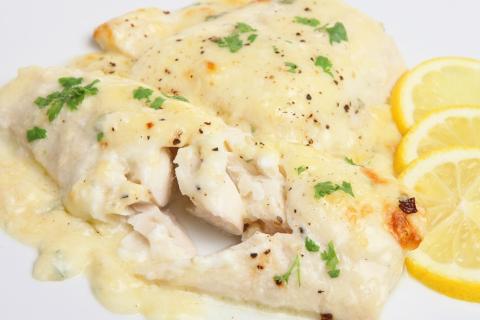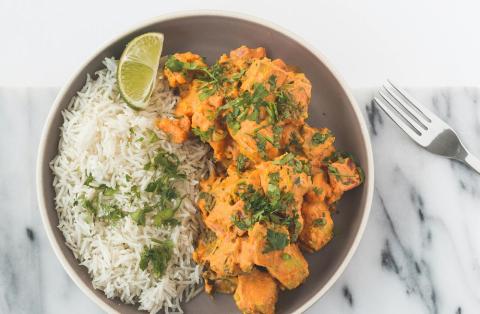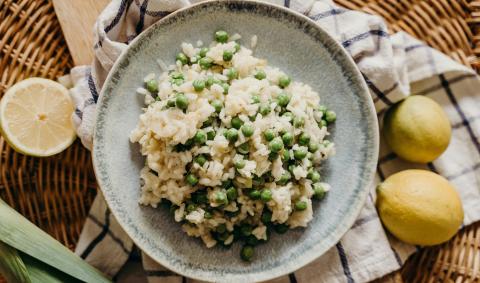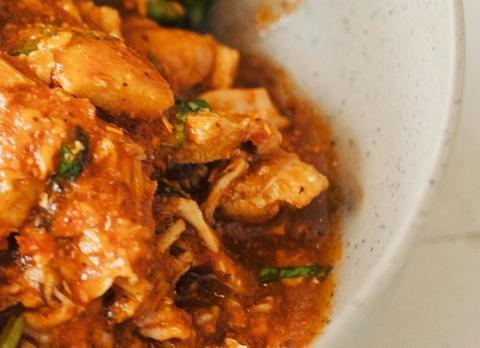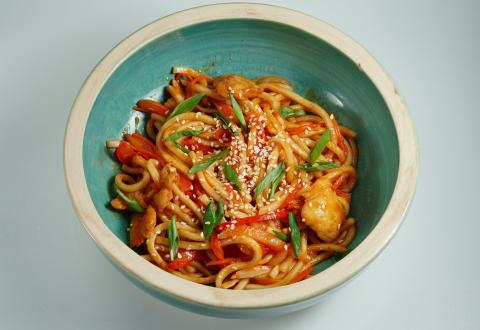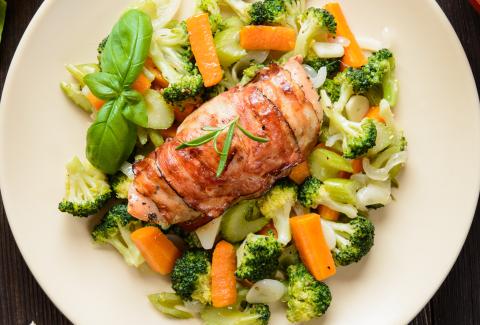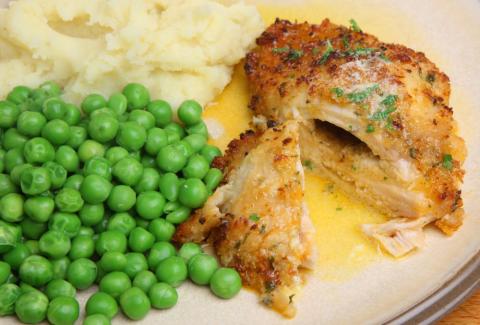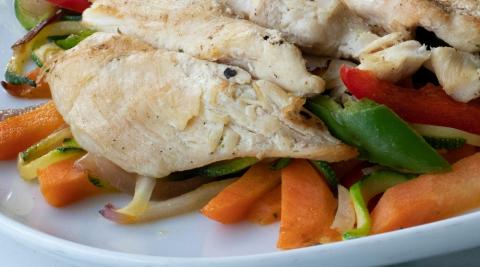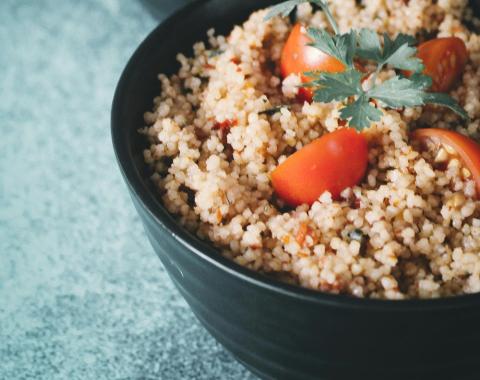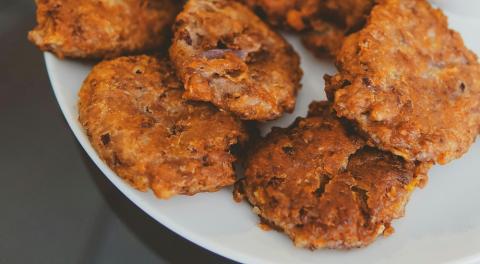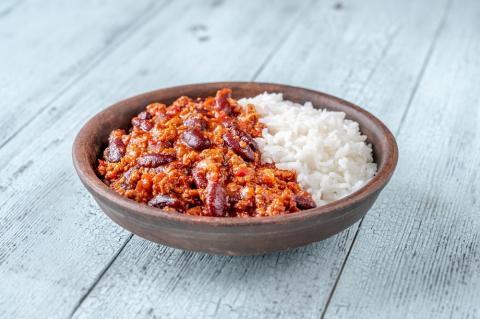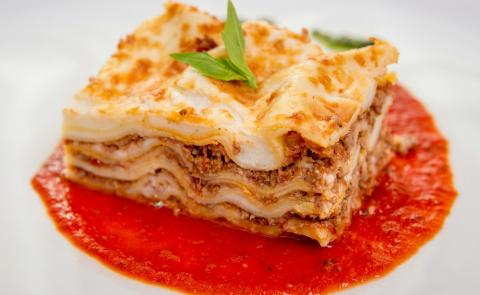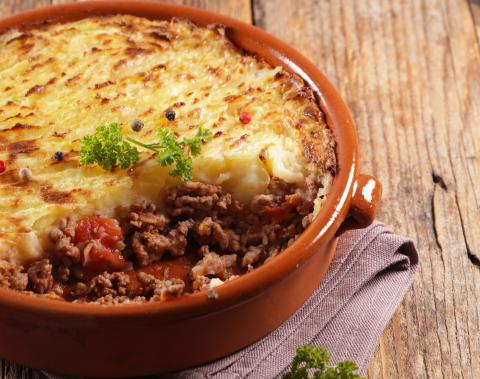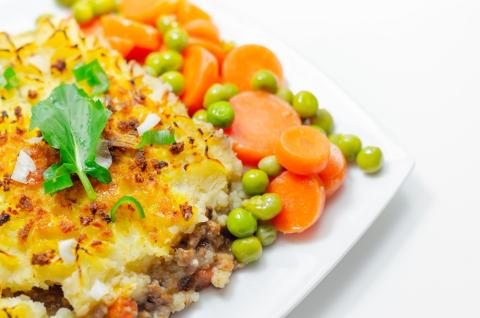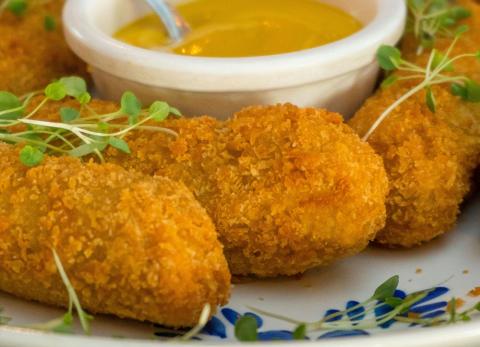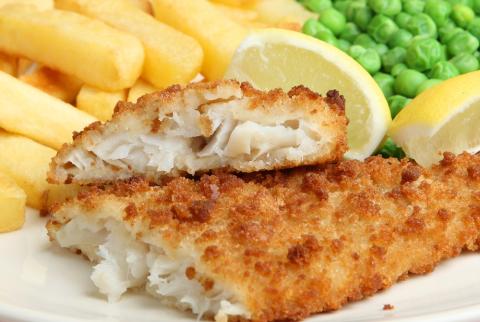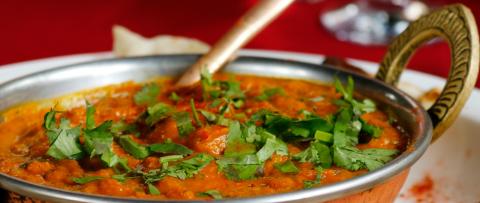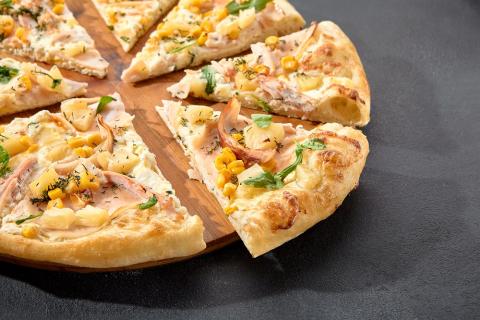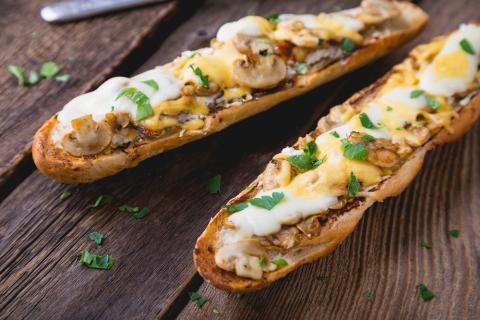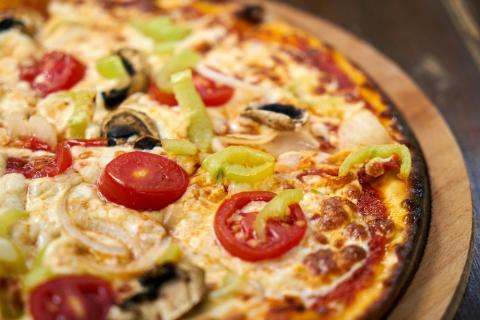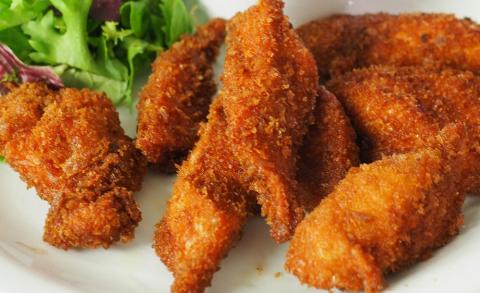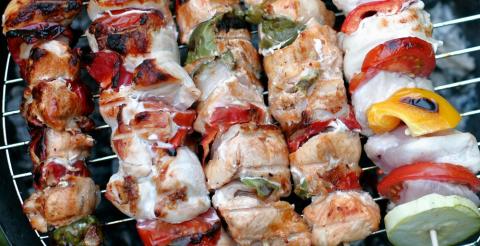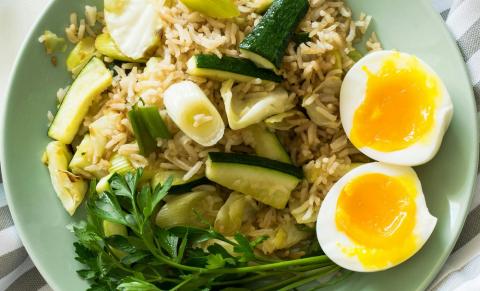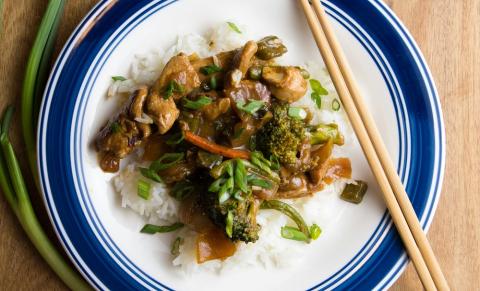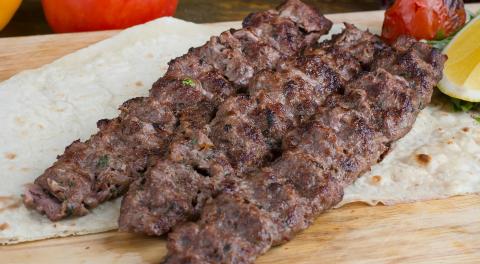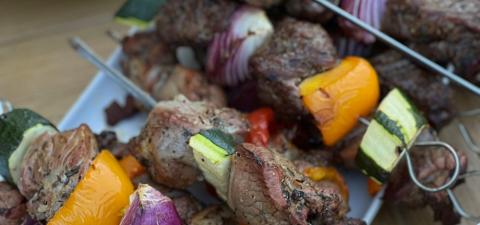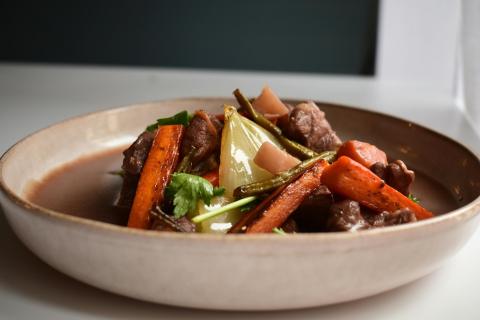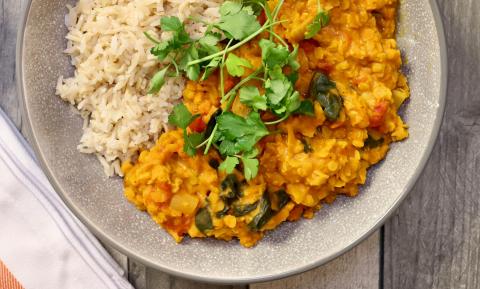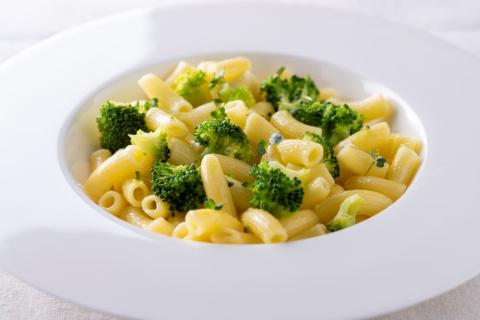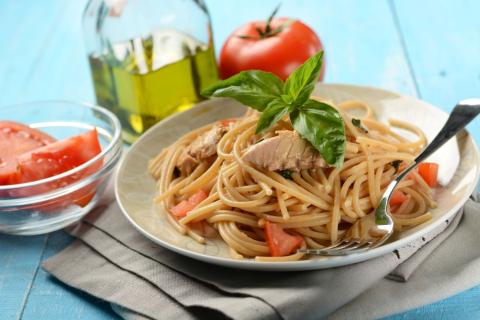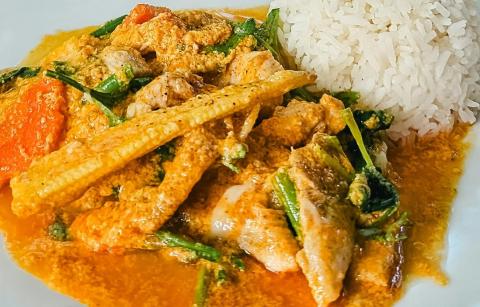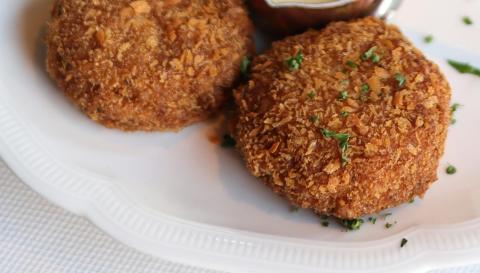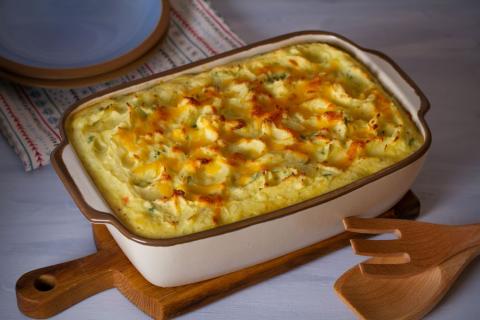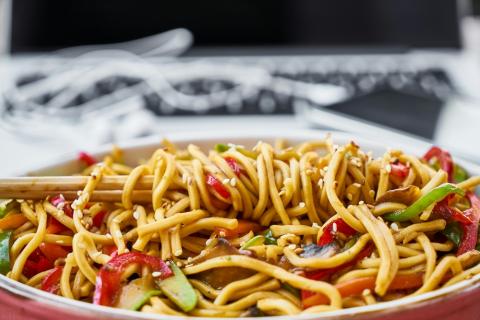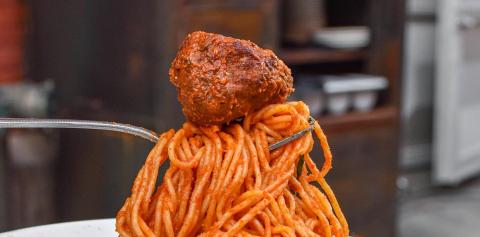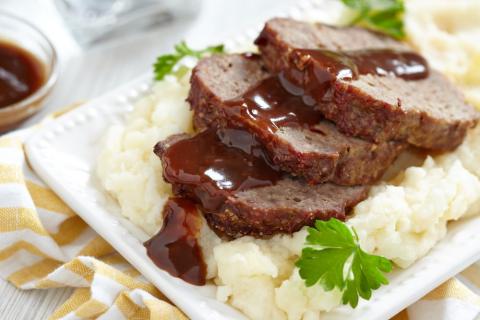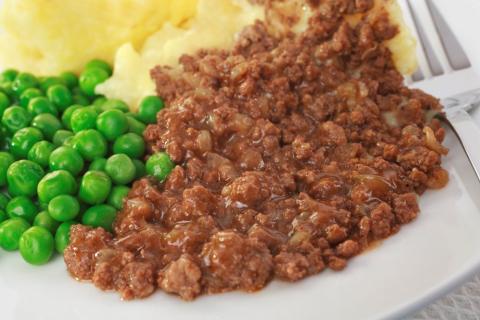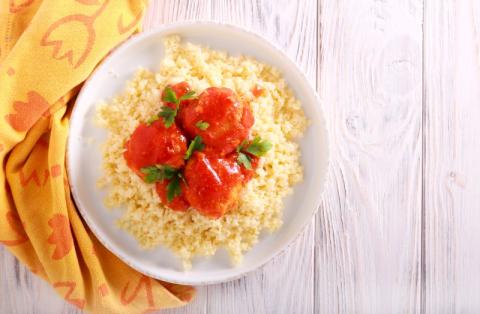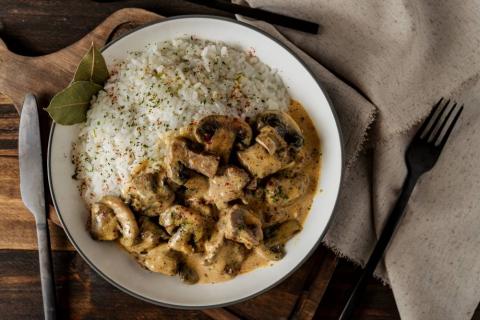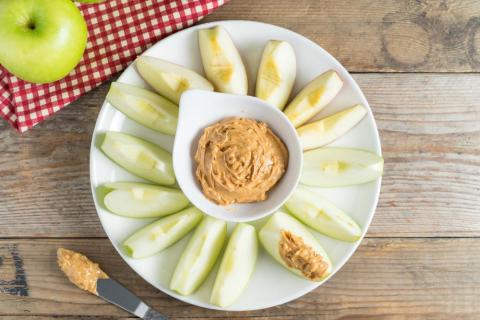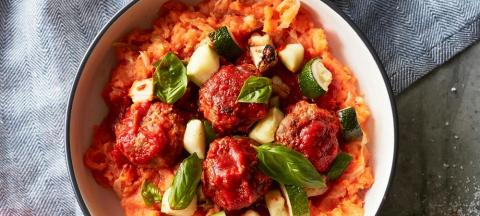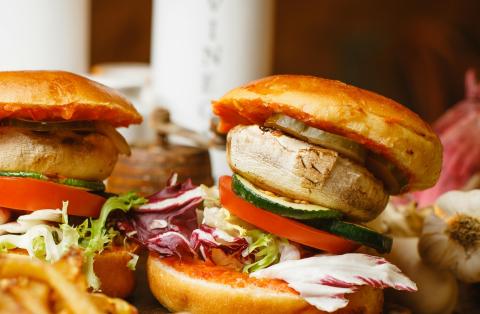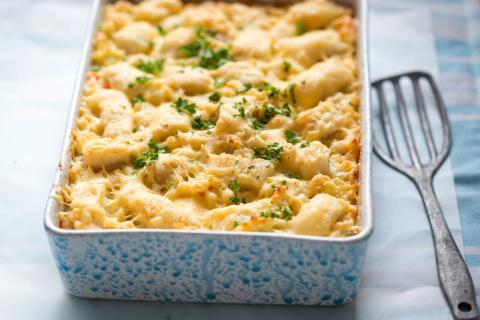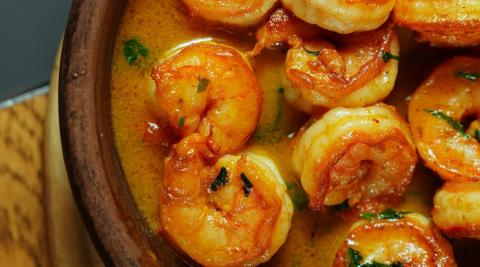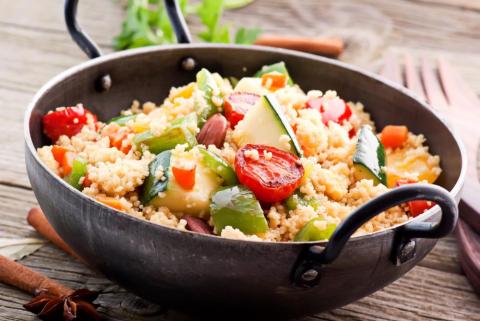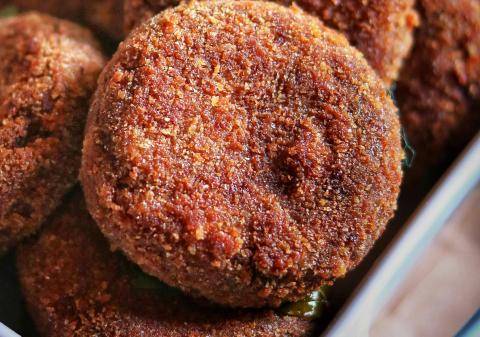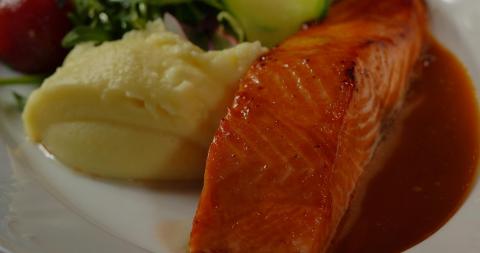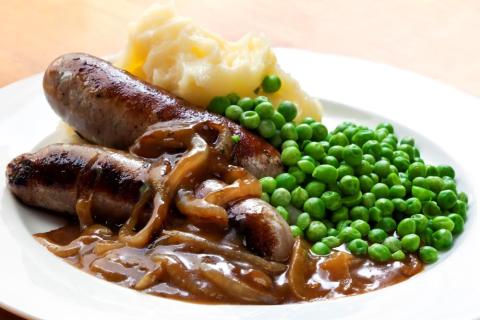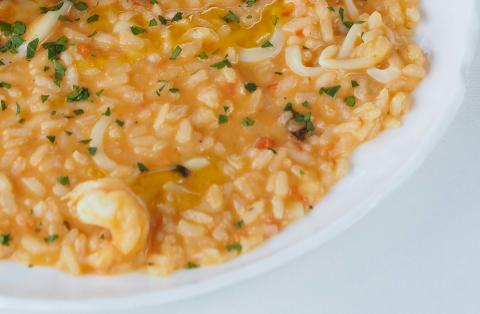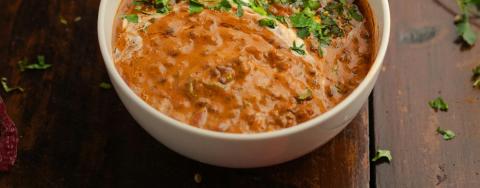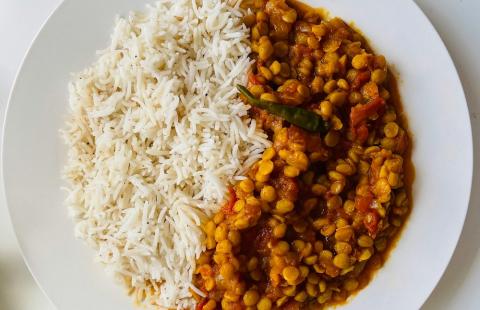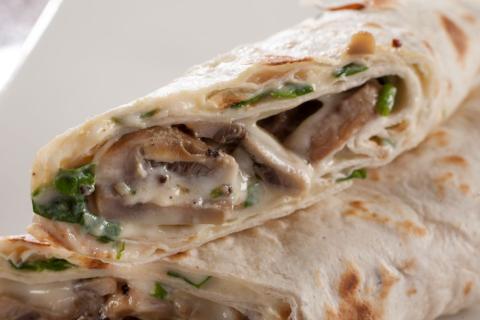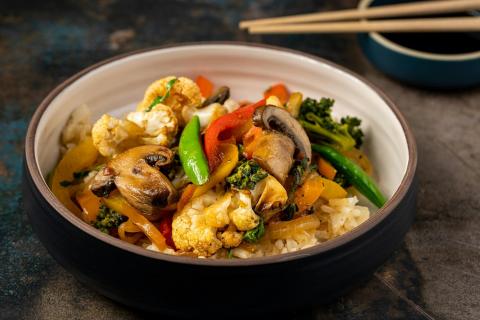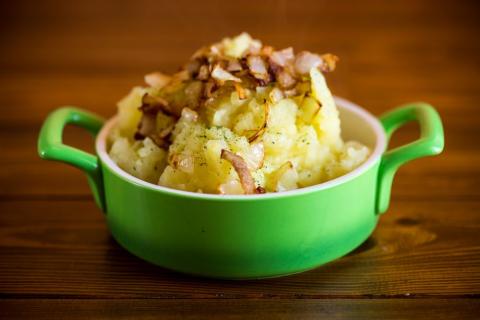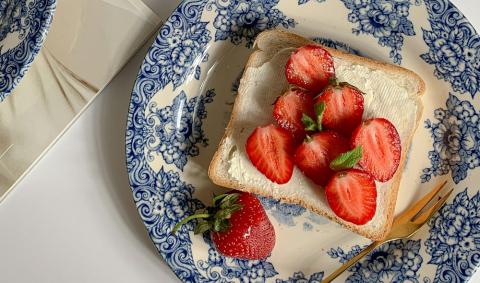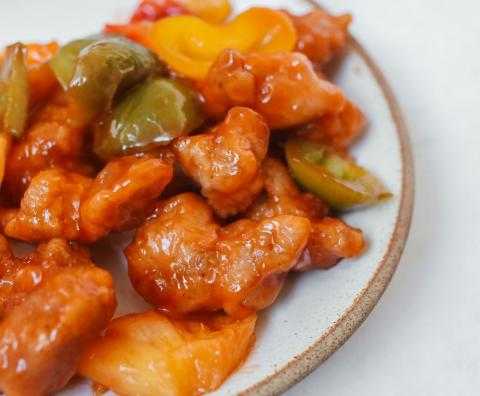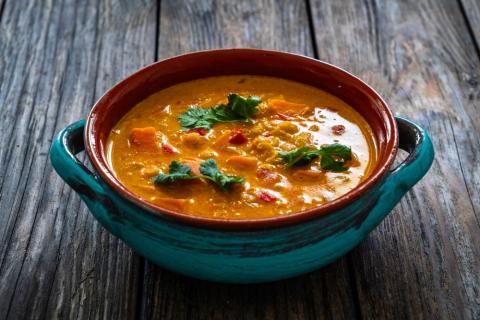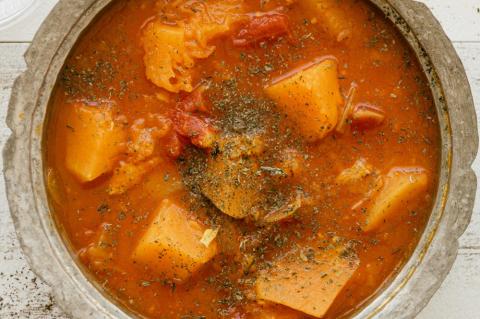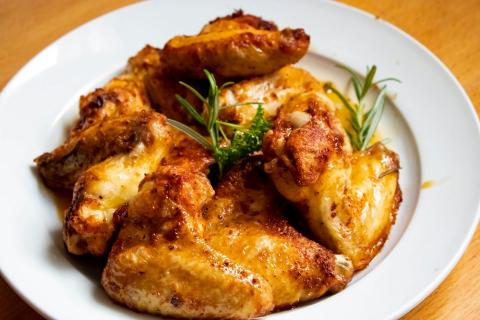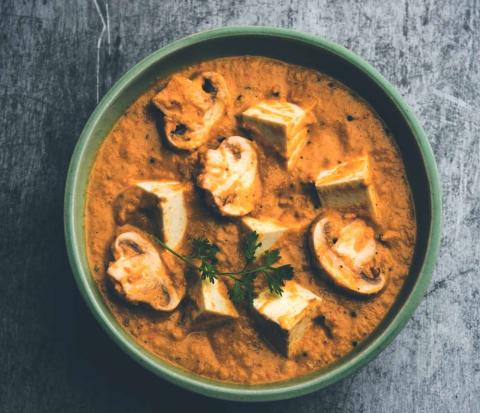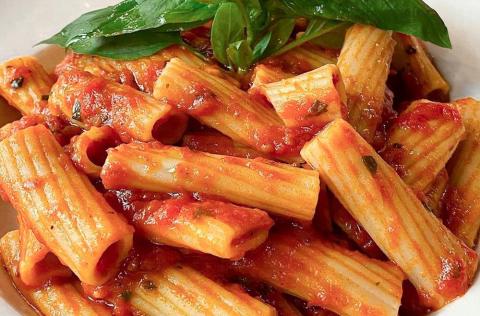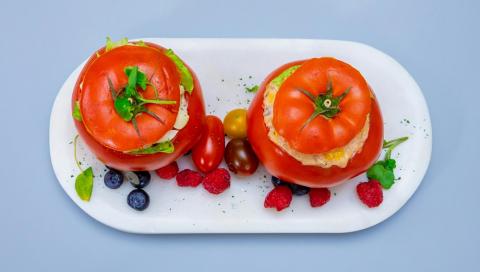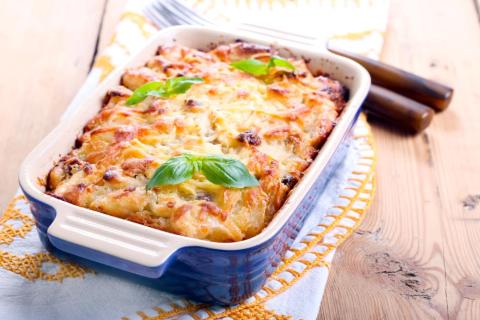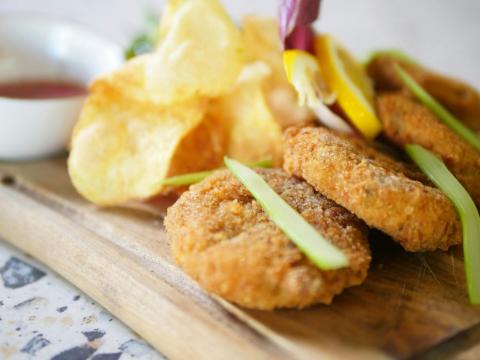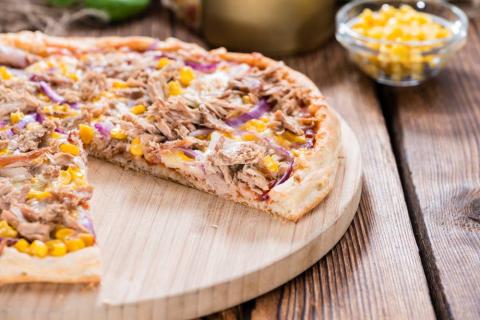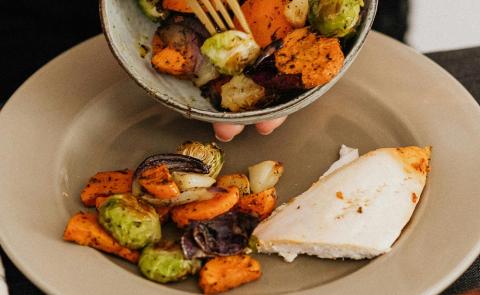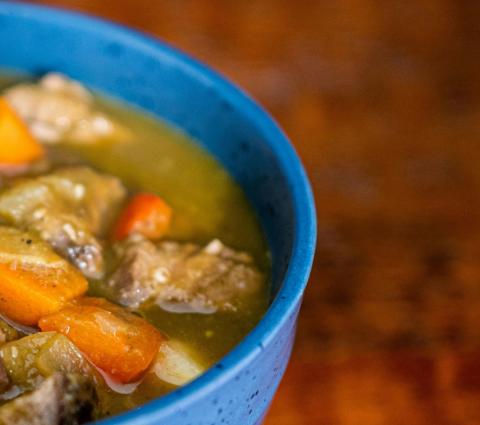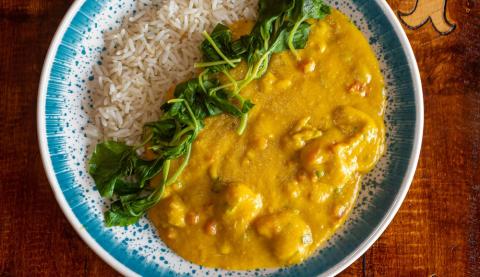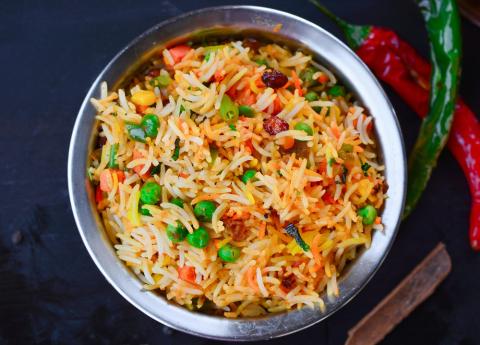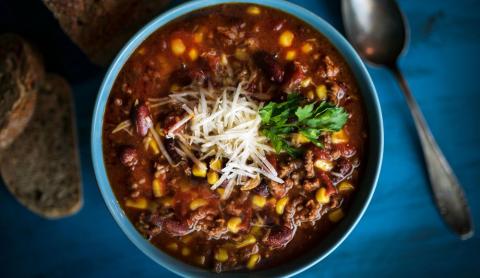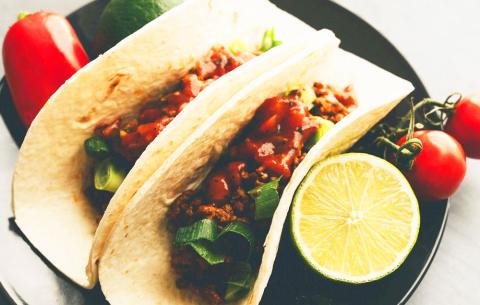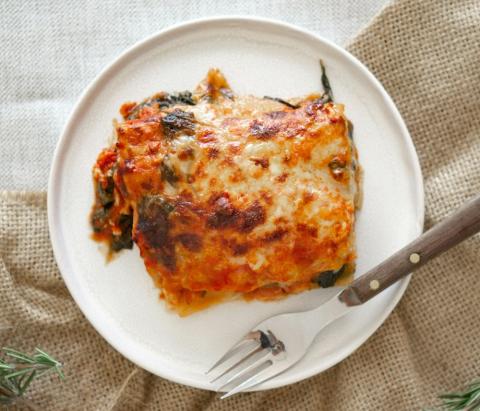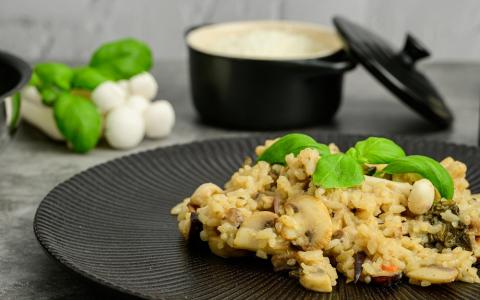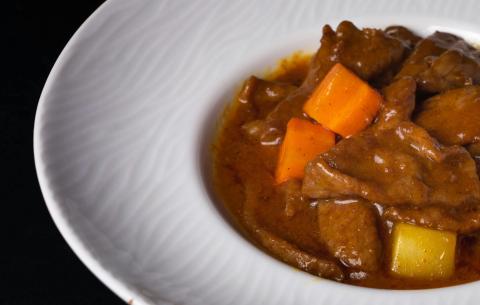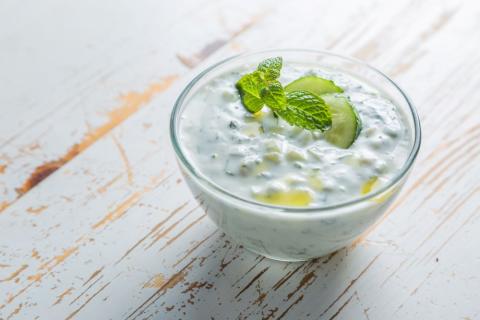- 2 (Frozen or Fresh) (250g) Salmon Fillets
- 2 Heaped tablespoons (60g) Plain Flour
- (1g) Black Pepper
- 2 (60g) Egg Whites
- 2 (Hard Cheese) Heaped tablespoons (20g) Grated Parmesan Cheese
- 4 Heaped tablespoons (60g) Breadcrumbs
- 1 (For the Dip) Heaped tablespoon (33g) Low Fat Mayonnaise
- 1 (For the Dip) Heaped tablespoon (40g) Low Fat Plain Yoghurt
- 1 (For the Dip) Teaspoon (40g) Mustard
- 1 Optional - (For the Dip) Teaspoon (1g) Chopped Parsley
Ingredients
Allergy Disclaimer
Always check the label of each ingredient for allergy warnings.
Method
- Preheat the oven to 200°C / 180°C fan oven / 400°F / gas mark 6. Using kitchen roll or fingers coat a baking tray with vegetable oil.
- If using frozen fish make sure it is defrosted before use.
- Rinse the salmon gently and pat dry with kitchen towel. Using a sharp knive cut the fish into approximately 10 cm strips that are 11/5cm in width and height.
- Place the flour and pepper in a bowl. In another bowl crack each egg being careful to keep the yolks in the shell (these are not required). Beat the egg whites with a whisk or folk until frothy. In a third bowl mix the cheese and breadcrumbs together.
- Coat each salmon strip in flour, pat to remove excess then dip in the egg and finally coat in breadcrumb mix.
- Place the sticks onto the baking tray. Bake in the oven for around 15- 20 minutes until golden brown.
- While the fish sticks are cooking make the dip by mixing the mayonnaise, yoghurt, mustard and herbs (if using) in a small bowl.
Time Saver Tips
Fish sticks & dip can both be made in advance and kept in the fridge. Cook strips when ready.
Cost Saver Tips
Use frozen fish. Choose an un-grated hard cheese instead of parmesan.
Tips for Kids
They will enjoy coating the fish. Try a mixture of white fish and salmon sticks if they aren't used to eating salmon.
Nutritional Information
Based on a single serving of 125g (% of an adult's reference intake)
Energy
308 kcals ( 15 %)
1,291 kJ ( 15 %)
Fat
3 g ( 15 %)
Saturates
28.3 g ( %)
Sugar
2.4 g ( 3 %)
Salt
0.5 g ( 8 %)
Detailed nutritional information
| Per 100g | Per 125g serving | |
|---|---|---|
| Energy Kcals | 246 | 308 |
| Energy Kj | 1,033 | 1,291 |
| Protein | 15.1 g | 18.9 g |
| Total Fat | g | g |
| Saturated Fat | 2.4 g | 3 g |
| Carbohydrates | 22.6 g | 28.3 g |
| Total Sugars | 1.9 g | 2.4 g |
| NSP Fibre | 0.5 g | 0.6 g |
| Sodium | 176 mg | 220 mg |
| Salt | 0.4 g | 0.5 g |
Find out about nutritional labelling
Nutrition labels on the front of packaging
- Most of the big supermarkets and many food manufacturers display nutritional information on the front of pre-packed food.
- Front of pack nutrition labels provide information on the number of grams of fat, saturated fat, sugars and salt and the amount of energy (in kJ and kcal) in a serving or portion of a recipe.
- The labels also include information about reference intakes (expressed as a percentage) which are guidelines about the approximate amount of particular nutrients and energy required for a healthy diet.
- The colour coding tells you at a glance if the food has high (red), medium (amber) or low (green) amounts of fat, saturated fat, sugars and salt.
- The more greens on the label, the healthier the choice
- Amber means neither high nor low, so you can eat foods with all or mostly ambers on the label most of the time.
- Reds on the label means the food is high in that nutrient and these are the foods we should cut down on. Try to eat these foods less often and in small amounts.
Food shopping tips
If you’re trying to decide which product to choose, check to see if there's a nutrition label on the front of the pack. This will help you to quickly assess how your choices stack up. You will often find a mixture of red, amber and green colour coding for the nutrients. So when you're choosing between similar products, try to go for more greens and ambers and fewer reds if you want to make a healthier choice.
 Activities & Play
Activities & Play Behaviour
Behaviour Childcare
Childcare Development & Growing Up
Development & Growing Up Family, Friends & Relationships
Family, Friends & Relationships Feeding Your Baby
Feeding Your Baby Food & Eating
Food & Eating Health & Safety
Health & Safety Mental Health & Wellbeing
Mental Health & Wellbeing Money & Work
Money & Work Online Behaviour & Safety
Online Behaviour & Safety Pregnancy & First Days
Pregnancy & First Days School & Education
School & Education Sleep
Sleep


